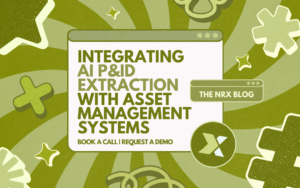A Deloitte study found that predictive maintenance can reduce facility downtime by 5% to 15% and increase labour productivity amongst teams by 5% to 20%. This capability is driven by the integration of AI into CMMS platforms, where real-time analytics and machine learning enable maintenance teams to take preventive action before failures occur.

Defining Predictive Maintenance and AI in CMMS
Predictive maintenance uses sensor data and machine learning algorithms to forecast when equipment will fail. Unlike preventive maintenance, which follows a fixed schedule, predictive maintenance adapts to the actual condition of the asset. AI enhances this process by continuously learning from new data and refining its predictions. When embedded into a CMMS, AI supports more efficient management of work orders, inventory, and technician assignments. These systems use data from vibration, temperature, and pressure sensors to provide a real-time view of equipment condition.

The Role of Real-Time Analytics
Real-time analytics allow AI-driven CMMS to detect deviations from normal operating conditions. For instance, if a motor’s vibration exceeds its normal range, the system flags this and can automatically generate a maintenance ticket. This eliminates guesswork and prevents costly downtime.
One global example is Airbus, which implemented predictive maintenance across its aircraft fleet. Using AI and IoT sensors, Airbus tracks engine performance to avoid mid-flight failures. This approach significantly improves reliability and raises safety standards.
Machine Learning and Pattern Recognition
AI algorithms in CMMS rely on historical data to build models that predict failures. These models become more accurate as they process additional information over time. The strength of AI lies in its ability to detect subtle patterns and correlations that are not immediately apparent to human analysts. This level of insight enables maintenance teams to take precise action instead of responding only after issues occur.
Challenges and Scalability
Despite the benefits, predictive maintenance with AI requires upfront investment in sensors, connectivity, and training. However, cloud-based CMMS solutions are lowering barriers to entry. As technology becomes more accessible, even mid-sized operations are beginning to implement AI for predictive maintenance. Cybersecurity remains a critical consideration. The protection of operational data and the security of systems against intrusion are essential for sustainable implementation.
Conclusion
Predictive maintenance powered by AI is more than a buzzword. It is a proven strategy that delivers measurable results. From improving uptime to reducing costs and extending asset life, AI-driven CMMS platforms are revolutionizing maintenance. For organizations looking to stay competitive, predictive maintenance is quickly becoming a necessity, not an option.
Integrating AI P&ID Extraction with Asset Management Systems
ISO 14224 vs Other Maintenance Standards: What Sets It Apart?
Building Trust in Your Asset Data: Strategies for Governance
Share this article




